Royalty and Rochester Cathedral
/
The land on which the Cathedral was constructed in 604 AD was donated by Æthelberht I, king of Kent from c. 589 to 616 AD. Æthelbert’s Code (c.600 CE) is the earliest surviving in the collection of Early English laws in Textus Roffensis, as well as the earliest dateable text composed in English,
The baptism of King Ethelbert features in our 2004 fresco in the North Nave Transept.
Read more about King Æthelberht, his conversion to Christianity and his motivations behind the writing down his code of law for the first time:
Dr Christopher Monk explores the origins of Ethelbert’s law-code, foundational document of the Early English Laws portion of the ‘Rochester Book’.
Textus Roffensis
Textus also records laws and charters from later kings of the kingdom of Kent, many of which survive only in this manuscript: those of Hlothere (king of Kent from 673 to 685) and Eadric (685 to 686), Wihtræd (690 or 691 to 725), Eadberht I (725 to 748), Eardwulf (747 to 765), Sigered (fllourishing in 762), reigning jointly with Ecgberht II (fl. 765 and 779), Heaberht, king of Kent in 765 and 764, and Cuthred (798 to 807). Laws and charters are also preserved from the Kingdom of Mercia: those of Æthelbald (reigning 716 to 757), Offa (757 to 796), and Coenwulf, (796 to 821). From the Kingdom of Wessex are those of Ine (reigning 689 to 726), Ecgberht (802 to 839), and Æthelwulf (839 to 858).
In the ninth century, the Kingdom of Kent merged with Wessex and others under pressure from invading Vikings. The laws of Æthelberht are recorded (king of Wessex and Kent from 860-866), Æthelred I, (king of Wessex from 865 to 871) and Alfred, king of the West Saxons from 871 to c. 886 and King of the Anglo-Saxons from c. 886 until his death in 899. Of the newly styled Kings of the Anglo-Saxons: Edward the Elder (899-924), and Æthelstan, reigning 924 to 927 and styling himself the first King of the English from 927 until his death in 939.
Æthelstan’s Grately Code, c.926-c.930
Æthelstan’s Grately Code (c.926-c.930). Transcription and translation from Old English of Textus Roffensis folios 32v-37r by Dr Christopher Monk.
There follows those of Edmund ‘the Martyr’ (939 to 946), Eadgar (959 to 975), Edward (c. 962 to 978), Æthelred ‘the Unready’ (978 to 1013 and again from 1014 until his death in 1016). Cnut was king of England from 1016, king of Denmark from 1018, and King of Norway from 1028 until his death in 1035, the three kingdoms known collectively as the North Sea Empire. Last of the Anglo-Saxon kings, those of Edward the Confessor, king of the English from 1042 to 1066.
The law codes in Textus Roffensis are a window onto the lives of women, men and children, free and enslaved, rich and poor, during the early centuries of English history at a time when the power of the king was absolute and unquestionable. Read more about Textus Roffensis and its early English law codes:
The manuscript known today as Textus Roffensis (‘the Rochester book’) is without question one of the most important of all medieval manuscripts. Compiled in the early 1120s, it is actually two books in one, containing a compilation of early English laws, dating as far back as the year 600, and a collection of charters relating to the
Later Middle Ages
The latest law codes in Textus are those of the first Norman king of England William I (king of England from 1066 to 1087), William II reigning 1087-1100 with powers over Normandy and Scotland, and Henry I, king of England from 1100 to his death in 1135.
The Cathedral has welcomed many Royals over the years. King Henry I visited Rochester Cathedral in 1130. He was attending the consecration of the Cathedral which had been rebuilt by Gundulf and other later Bishops. Henry I and his wife Queen Matilda of Scotland feature as statues either side of the Great West Door as a sign of their early patronage. In the thirteenth and fourteenth centuries it became common to include sculpted heads of the monarchs of the day as a kind of date stone. Read more about the monarchs depicted in sculpture at the Cathedral:
The medieval equivalent of a datestone, dozens of regal sculpted heads adorn the Cathedral architecture, from the House of Normandy to Saxe-Coburg and Gotha.
In 1300 King Edward I visited the Cathedral and offered 7 shillings at the Shrines of St William of Perth, St Paulinus and St Ithamar.
The Tudors
At least two Tudor monarchs visited the Cathedral. Henry VIII met his fourth wife, Anne of Cleves, for the first time in Rochester Priory in 1540. Less than a year later he dissolved the Priory as part of the Reformation. His daughter, Elizabeth I, visited over 30 years later in 1573 attending the Divine Service and listening to a sermon. £13 was spent on festivities which is about £3000 today.
The English Civil War and Jacobite bishops
Being a Cathedral, Rochester was very much a High Church Royalist stronghold, and like many cathedrals it suffered during the English Civil War and subsequent decades. A recent study into the origins of Black Boy Alley opens a window onto this period, where the Dean & Chapter were required to contribute to an armed militia and battle-hardened veterans of the conflist filled the local inn.
Read more about the English Civil War at Rochester Cathedral:
Rochester’s Black Boy Alley: origin and heritage
‘Black Boy…’ can be found in the names of many UK pubs, roads and pathways but it has an obscure origin. Rochester’s Black Boy Alley was once bordered on its west side by the Black Boy Inn, with its roots in the English Civil War (1642–1651).
The fate of the Bishops of Rochester often came down to which side they backed in the matters of monarchy and politics of the day. Three bishops; Francis Turner, Thomas Sprat, and Francis Atterbury were each accused of being Jacobites, with Atterbury found guilty and spending the rest of his life in exile in France.
20th century
Queen Mary and Princess Elizabeth visited the Cathedral in 1937.

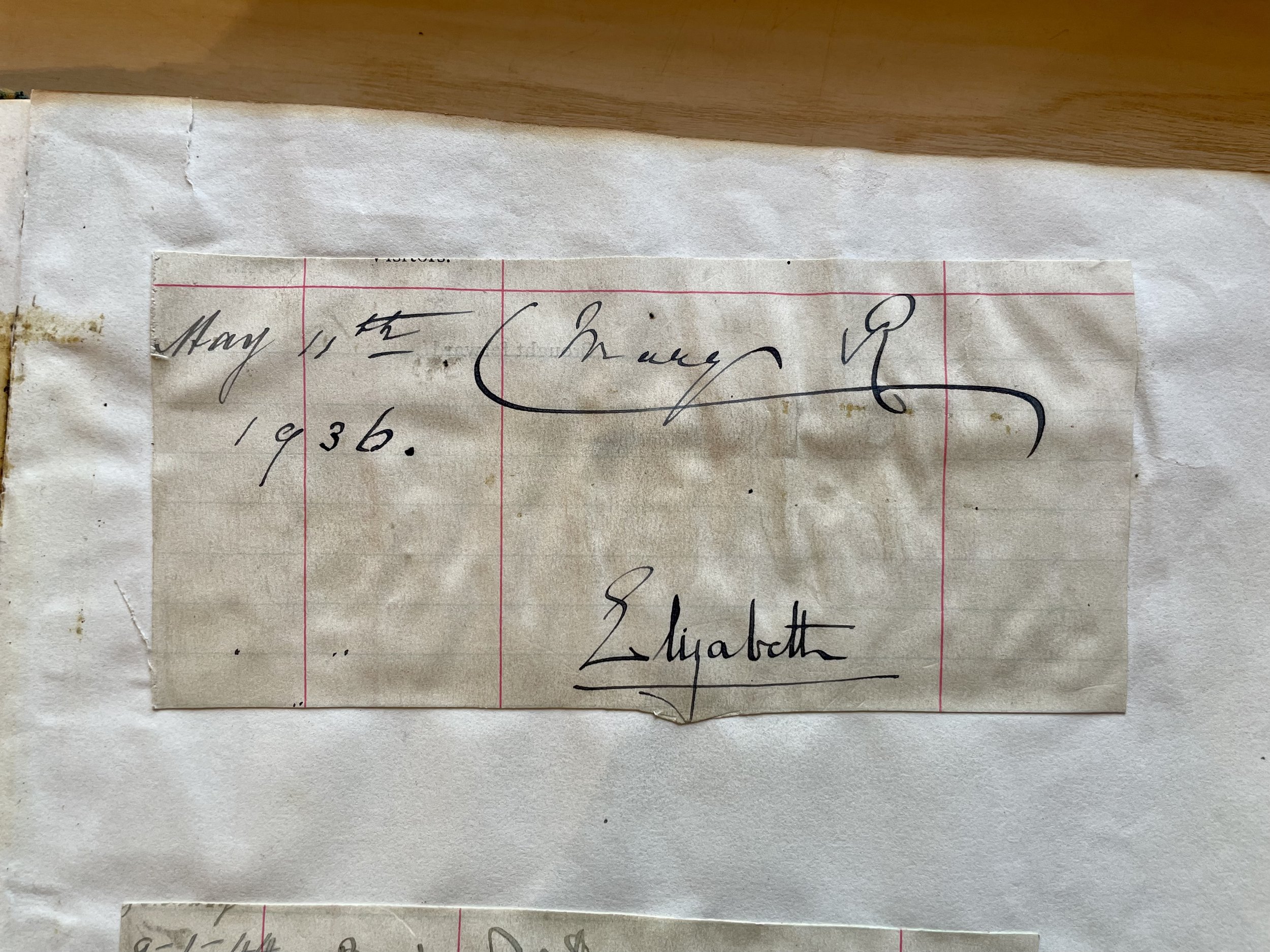
Photo and signatures in the visitor book from the visit of Queen Mary and Princess Elizabeth in 1937. Rochester Cathedral Chapter Library, Events and Services photo album and Visitor Book.
Princess Elizabeth would visit the Cathedral again as Queen Elizabeth The Queen Mother for the 27th Jubilee of The Diocese Celebrations in May 1954.
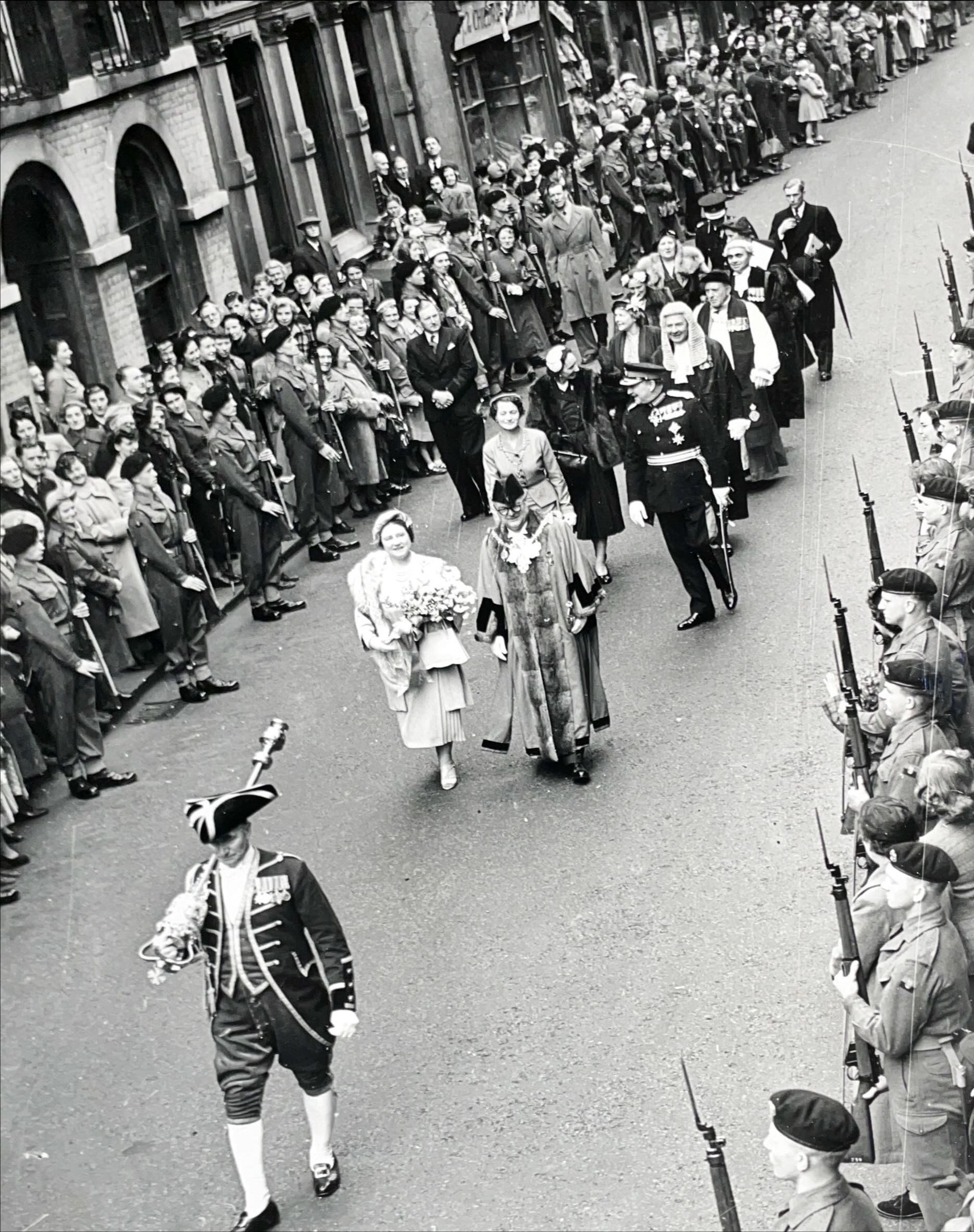
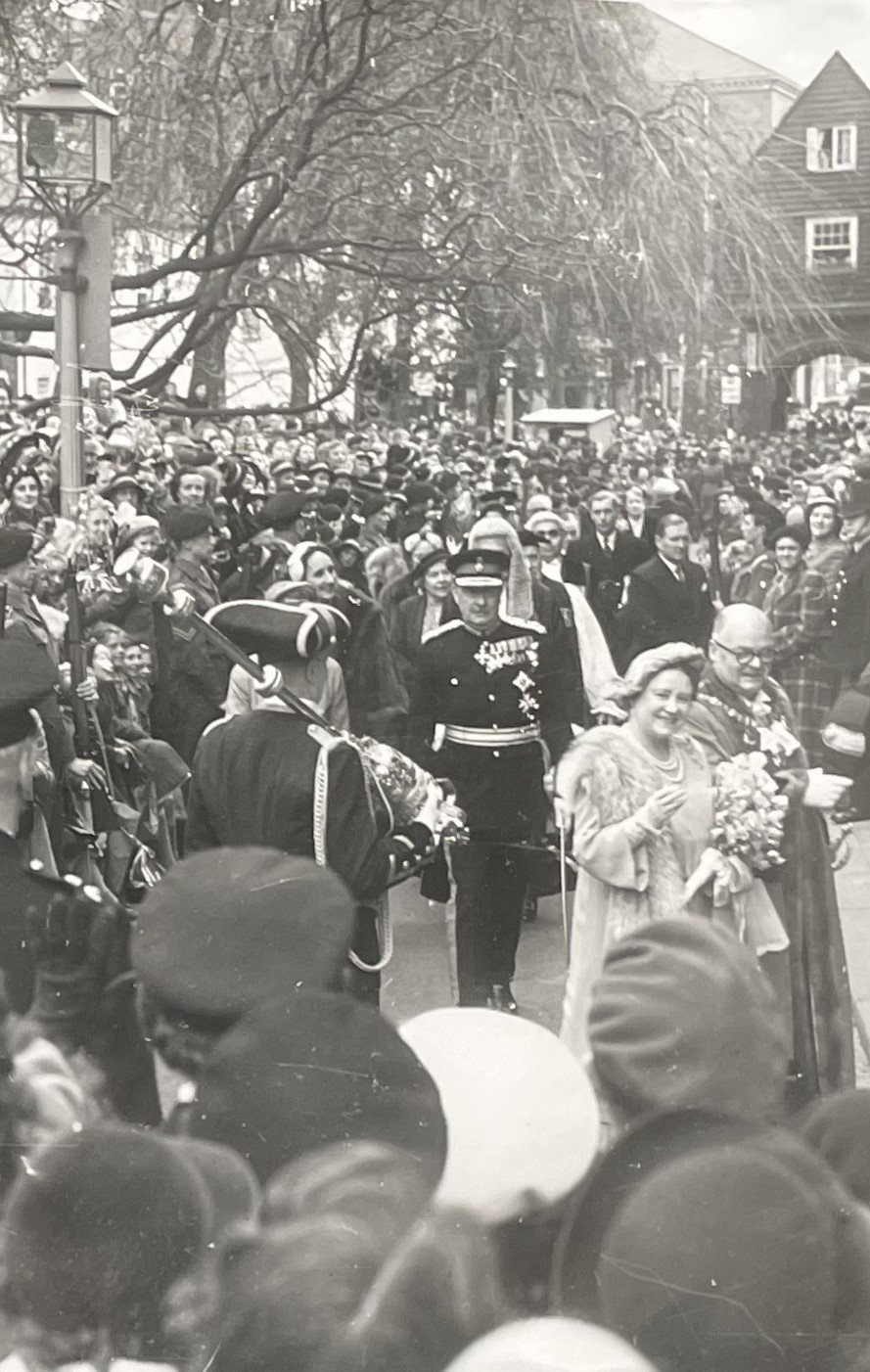
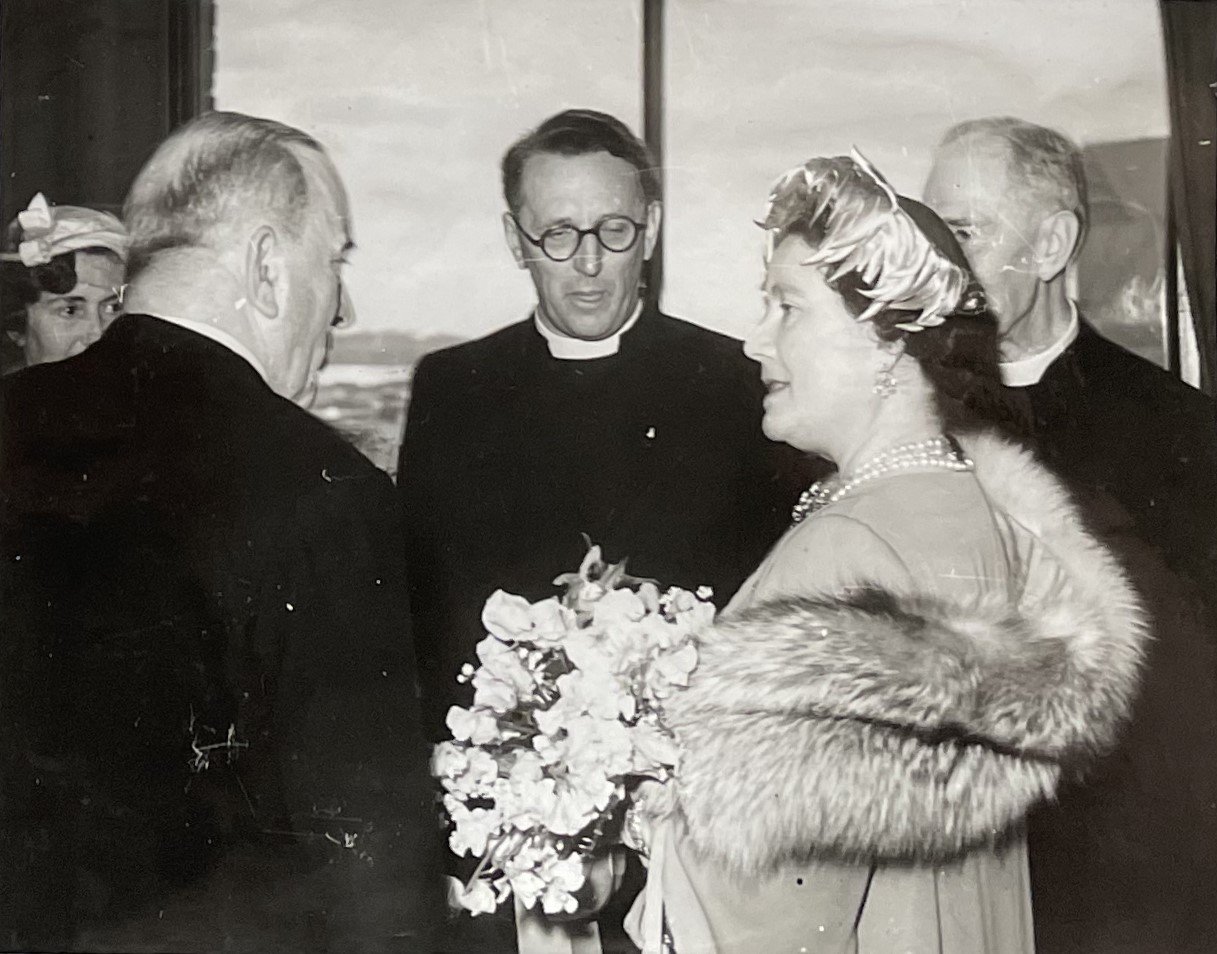
Photos from the visit of Queen Elizabeth The Queen Mother. Rochester Cathedral Chapter Library, Events and Services photo album.
Her Majesty Queen Elizabeth II visited the Cathedral three times: on May 18th 1954, in October of 1956 when she was greeted by Bishop Chavasse, and again on 30th March 1961 with HRH The Duke of Edinburgh for the distribution of the Royal Maundy.
Unfortunately, no photos of the 1954 visit have yet come to our attention, though a signature is preserved in the Vistor’s Book.
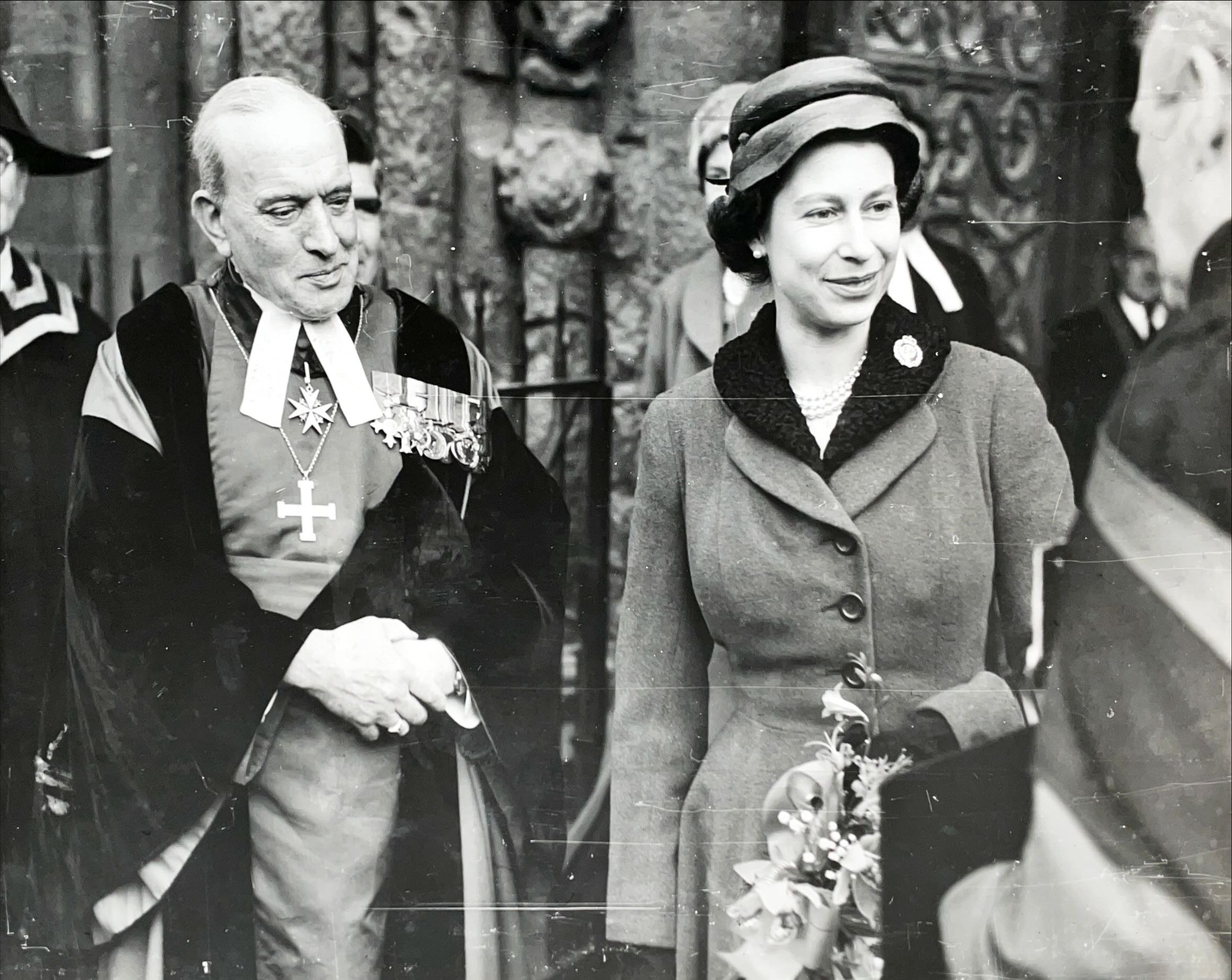
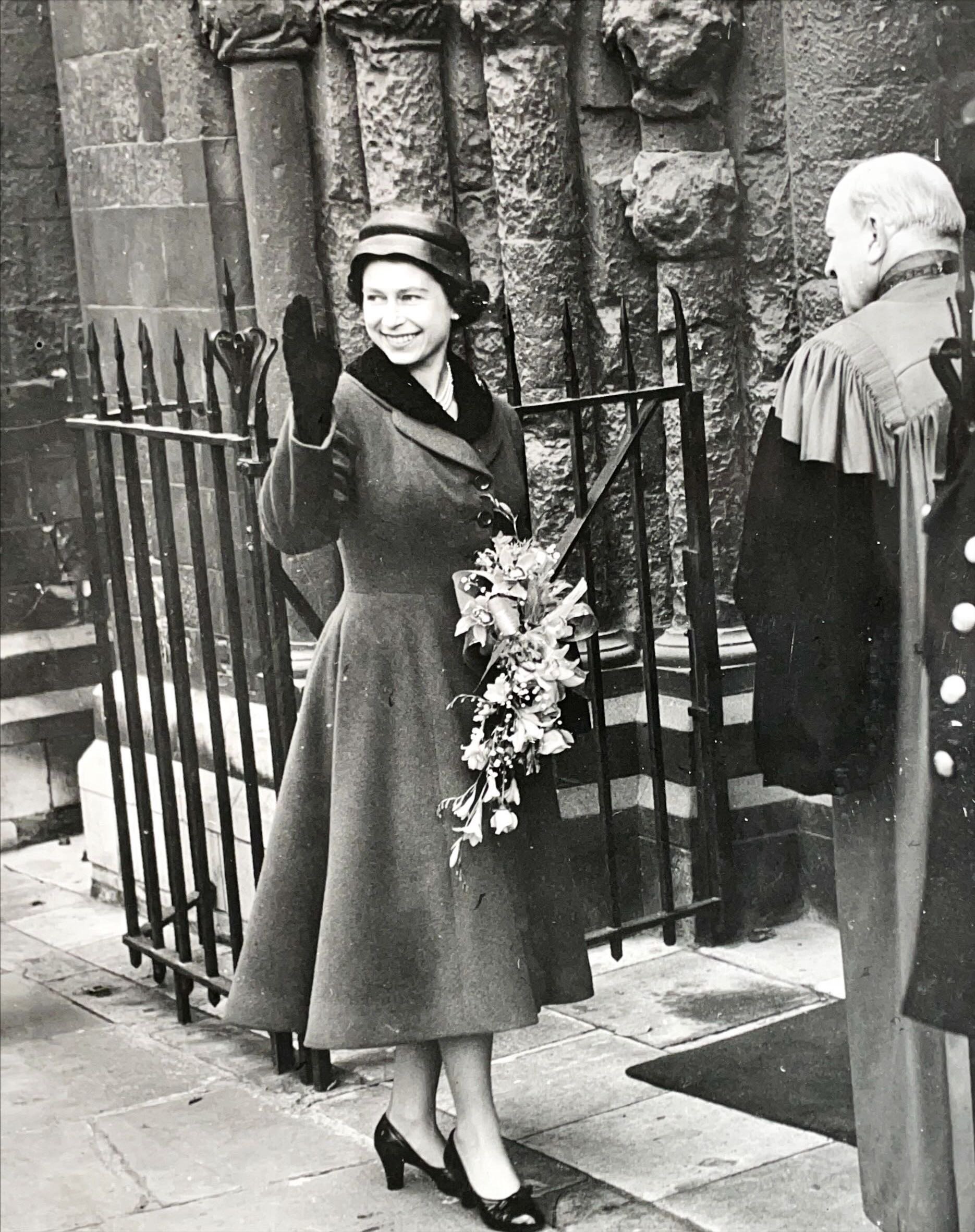
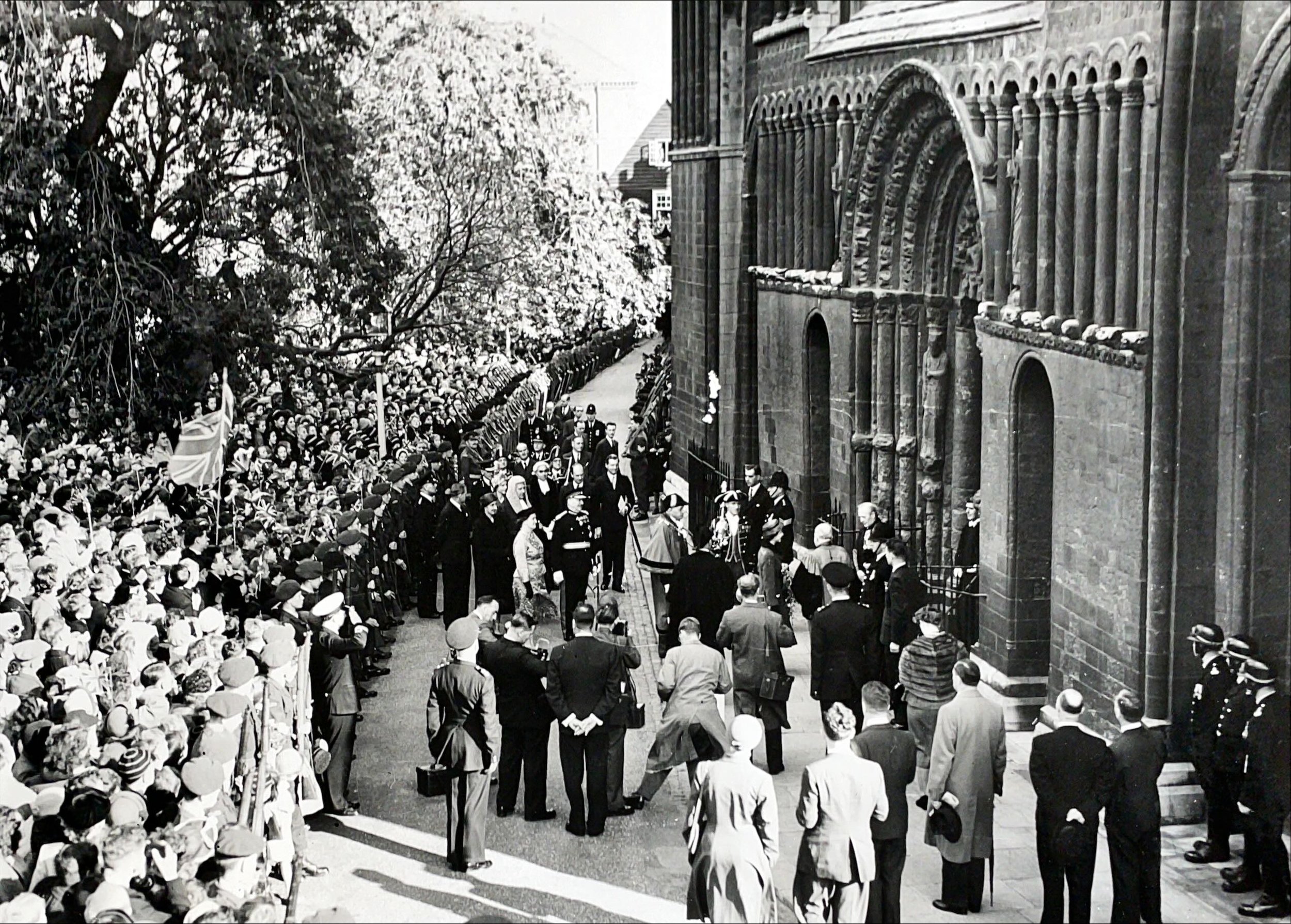
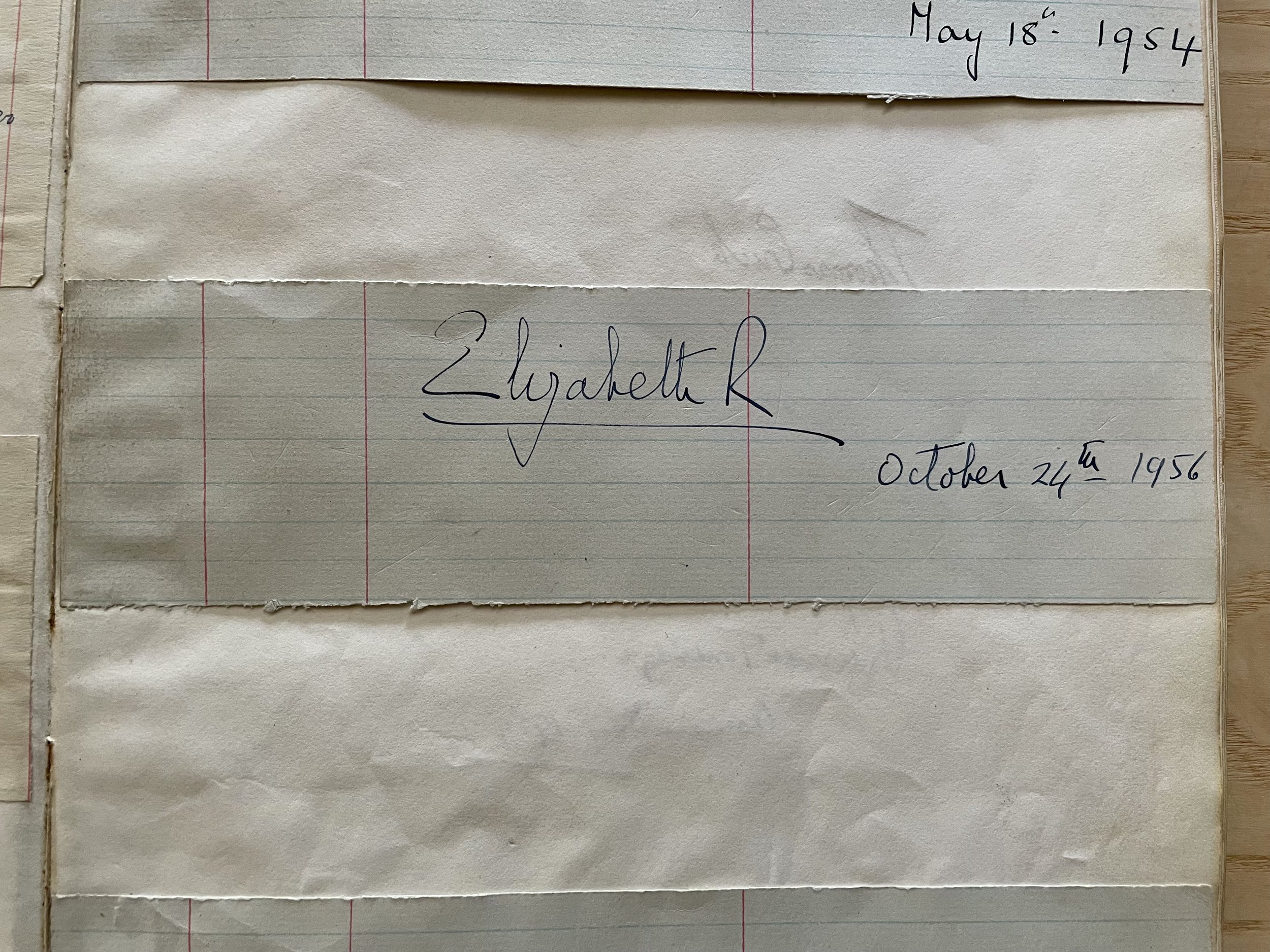
Photos of the visit of Queen Elizabeth II in October 1956. Rochester Cathedral Chapter Library, Events and Services photo album and Visitor Book.
Dean Francis Crick greeted the royal couple on the 1961 Maundy visit. Read more about the visit and the fond memories from the day:
Remembering the Royal Maundy visit
31st March 2021 marks the 60th anniversary of the last visit by HRH Queen Elizabeth II and HRH the Duke of Edinburgh to Rochester Cathedral.
21st century
HRH The Prince of Wales attended the 1400 Celebration Service on 10th November 2004, an evening celebration preached by the Archbishop of Canterbury in thanksgiving for Justus: pilgrim, missionary, and the first Bishop of Rochester.
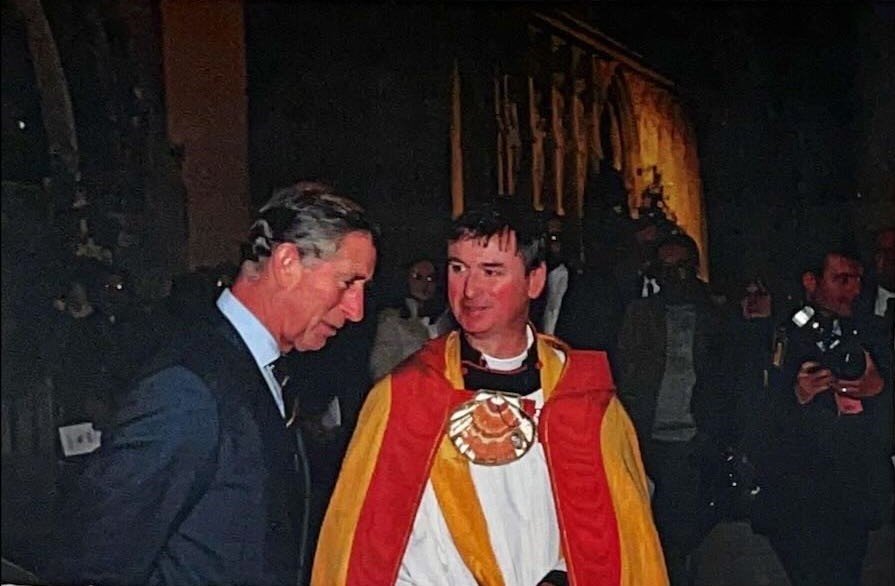
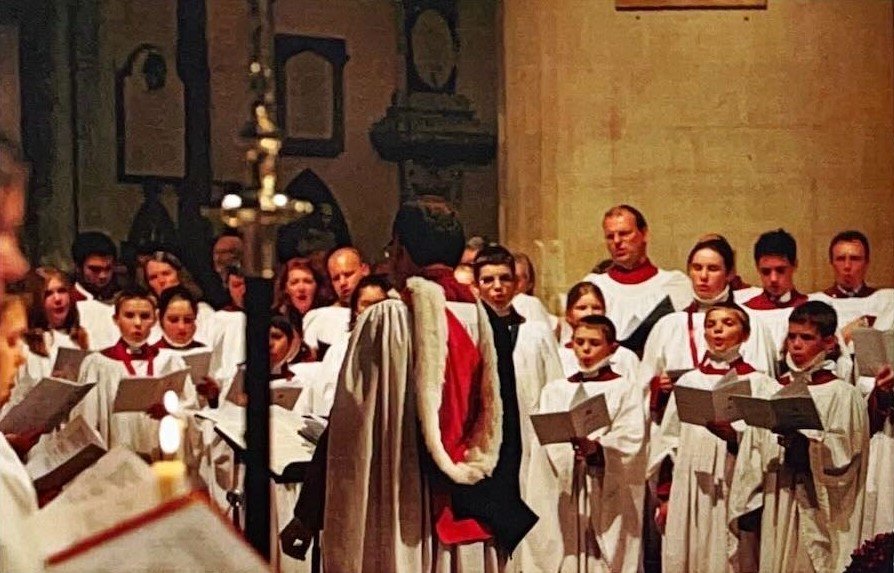
Photos from the 1400 Celebration Service. Rochester Cathedral Chapter Library.
The future King Charles III would also visit more informally on the occasion of a Jools Holland performance in 2007.
Signature of HRH Prince Charles in the Visitor Book, Rochester Cathedral Chapter Library.
In August 2012 Rochester Cathedral hosted the stunning artwork The People’s Monarch during the celebration of the Queen’s Diamond Jubilee. Read more:
‘The People’s Monarch’ was commissioned by BBC South East and depicts the Queen at the time of her coronation and at her Diamond Jubilee. It is 38 square metres and contains 5,000 photos. Its current home is at Gatwick Airport after touring at the Towner Gallery, the Turner Contemporary and Rochester Cathedral.
We have been delighted to host HRH Sophie of Wessex, now the Duchess of Edinburgh, on several occasions in recent years, most recently on Wednesday 13th September for a visit to see the restored and refurbished Crypt and Library.
The Countess was met at the Great West Doors by The High Sheriff George Jessel, Cllr David Wildey Mayor of Medway, Mr Neil Davies Chief Executive of Medway Council, Mr David Brazier Chairman of Kent Council, Chief Insp Simon Alland of Kent Police, The Dean of Rochester The Very Revd Dr Philip Hesketh and Rochester Cathedral Trust Chairman, Mike Aiken.
Mrs Barbara Brigden from The Kent Association for the Blind showed The Countess the Tactile timeline created by her group in the Textus Exhibition in the Crypt while members of The Kent Autistic Trust with Christine Edwards Daem (CEO of the Trust) and Wendy Daws (Lead Artist) guided The Countess around the glass wall etchings. The visit provided an opportunity to meet some of the Library Volunteers (led by Volunteer Manager Lisa Johnson) involved in the recent works.
HRH The Countess of Wessex is shown a historic volume in the newly furbished Chapter Library.
HRH the Duchess of Edinburgh is the Royal Patron of Rochester Cathedral Trust and was accompanied by her Private Secretary, Ms Amy Mayes.
Rebecca Peachey
















